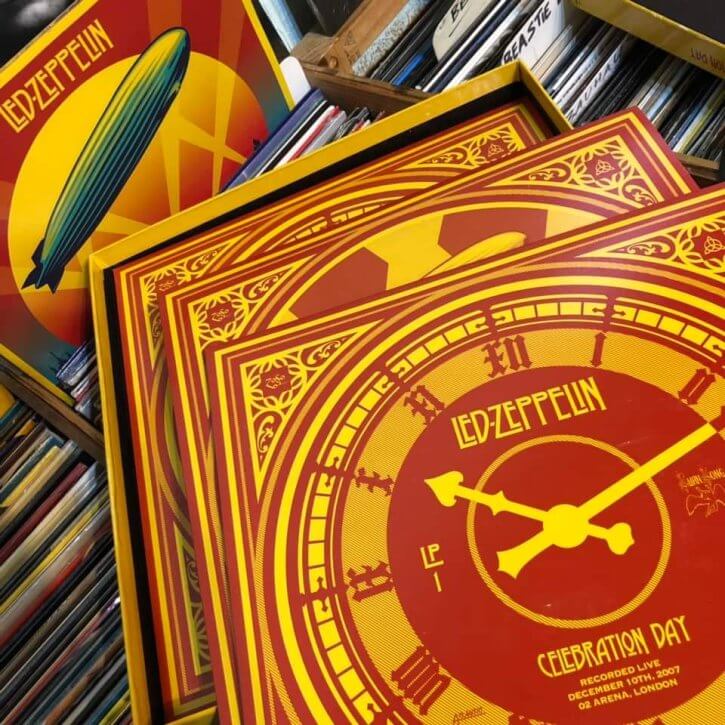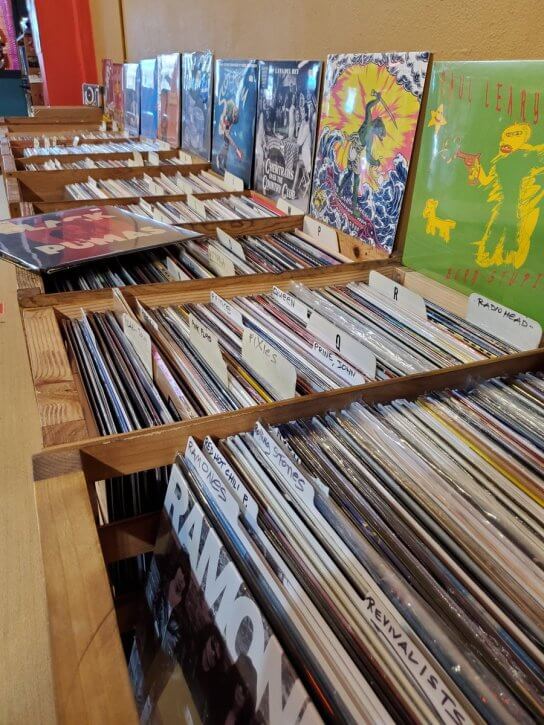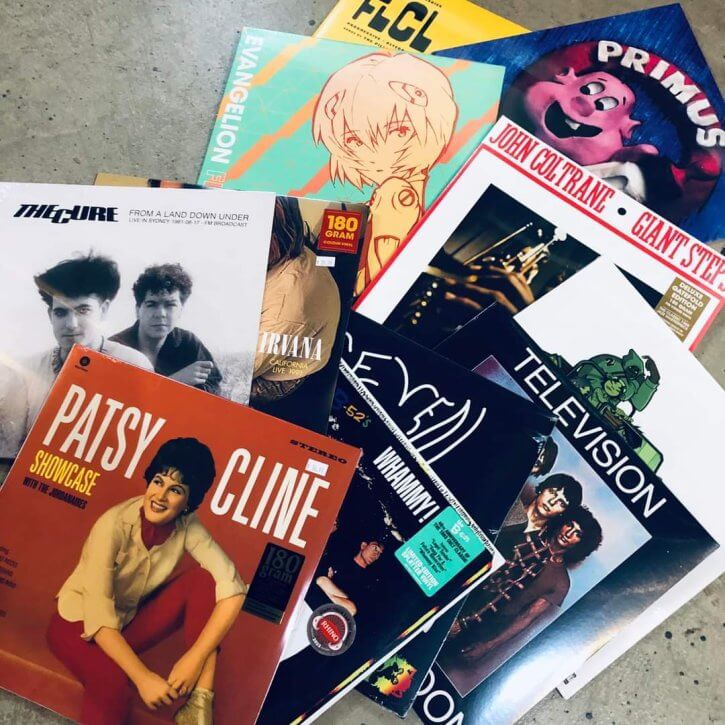
Dust off that old stereo and snag your parents’ records because vinyl is back! According to the Recording Industry Association of America (RIAA), 2022 marked the sixteenth consecutive year that vinyl has continued to rise in popularity. Last year marked the first year since 1987 that more vinyl records were sold than CDs. In a time where every album is digitally in the palm of our hands, this data points to the resurrection of a fading format and industry.
In anticipation of Record Store Day on April 22, we spoke with Eric Jones, owner of Pensacola’s Revolver Records, who says that vinyl’s popularity has steadily been on the rise for more than a decade “I would say vinyl dipped in the 90s and the 2000s,” Jones explained. “The teens [2013, 2014, etc.] is when it started kicking back in and it’s still going strong. We’ll see how long that lasts. It could be a bubble that bursts, or next year could bring twice what it did this year.”
In recent years, older and newer artists alike are promoting vinyl records to their fanbases. Older artists like Pink Floyd and The Rolling Stones are reissuing their catalogs on vinyl, and newer artists like Billie Eilish and Harry Styles are even releasing some of their newest albums on vinyl. Fans are jumping at the chance to get the latest vinyl releases from their favorite artists.

According to the RIAA, 41 million vinyl records were sold in 2022 alone. In the past year, vinyl revenue grew 17 percent, reaching $1.2 billion in total sales. Vinyl proved to be the most popular physical music format for consumers in 2022, accounting for 71 percent of the total revenue made by any other physical music formats. These national trends match local trends, as vinyl is also the topselling format at Revolver Records. When asked about the shop’s recent sales, Jones said: “[Sales] have bumped up a little bit because more people are into records. Yes, there’s been an increase. Ever since I reopened Revolver in 2010, vinyl has been my bread and butter, meat and potatoes. It’s been just about all I sell.”
With all this talk about vinyl making such a big comeback, one may wonder why today’s teens and young adults are gravitating toward a format that feels outdated. After all, vinyl has been succeeded by cassettes, 8-tracks, CDs, MP3s and today’s popular streaming format. While each new format has claimed to improve the listening experience, many people still see vinyl as the best and most magical way to experience their favorite music. Three major factors contribute to the recent resurgence of vinyl records: sound, collectability and experience.
People are rediscovering (or discovering for the first time) the warm sound that vinyl has. In a world where we gravitate towards Spotify and Apple Music out of convenience, a warm and rich-sounding record can be a good way to take a break from the compressed and almost robotic sound of listening to music on streaming platforms. Because of the openness that vinyl has in comparison to the compressed sound of music on streaming platforms, there are sounds that one may hear on the vinyl version of the album that get lost in the digital version.
In addition to the richness of vinyl, many older (and some new) records sound better on vinyl because they were mastered to be listened to on vinyl. For example, since Spotify did not exist in the 1960s, the Beatles mixed their records with the intention of consumers listening to the finished product on vinyl. Because the artist’s intention was to have the album played on a turntable, it sounds better on a turntable.

Another major factor contributing to the recent increase in vinyl sales is the collectability aspect of vinyl records. Today, vinyl comes in so many varieties—it is pressed with different colors, glitter inside of it, a splattered effect, different shapes, etc. While it was possible to press funky-colored and patterned vinyl in the 70s and 80s, it was much less common. Since vinyl was the standard format for listening to music back then, the appearance of the record did not matter much to the consumer. If the record played music, the product was good. These fun varieties have created an aesthetic aspect to collecting records.
Several artists are cashing in on the collectability aspect of the vinyl craze. Most recently, American singer-songwriter Taylor Swift released four editions of her latest album Midnights on vinyl. Each of the four editions featured a different colored record and different album art. When a fan purchases all four albums, they can lay out the records with the back covers facing up to connect the back cover art, which makes a clock. The funny thing about the four records is apart from the different colored records and the different cover art, the track listing and music is the exact same on all four copies of the album.

Swift is the prime example of an artist who understands the collectability aspect of the vinyl craze. She essentially sold the same album four times. Swift not only made this smart marketing move to sell more records, but she also sold a kit that allows fans to wall-mount each of the records and place moving clock hands in the center. This type of collectability is what many new vinyl fans crave; they want something that looks as good as it sounds. Many people are purchasing and collecting vinyl only for its physical aesthetic, and not to listen to it. According to Billboard, nearly half of the people who purchase vinyl records do not own an actual record player.
The physical ritual of vinyl also plays into another contributor to vinyl’s resurgence—the experience. Many people are falling in love with vinyl because of the experience they get all the way from buying an album to taking it home and enjoying it. The vinyl experience often starts with browsing the selection at a local record store. Flicking through stacks of albums and finding something unique is exciting. It is equally exciting to look at all the details hidden in the cover art—something that isn’t possible with a tiny album image on a screen.
When the time to play the album finally comes, it is exciting to drop the needle on the record and be immersed in the warm sound seeping out of the speakers. Listening to an album all the way through and hearing the songs on an album in their intended order creates a complete experience. From browsing through thousands of records at a record store, to hearing the last track on an album, people are enjoying the distinct experience that vinyl provides.
The vinyl revival has been kindled by fans who want to seek out albums, admire the physical art of an album cover, and enjoy the warm sounds of their favorite artist an experience that streaming can never provide. Perhaps this unique experience is why vinyl is still on fire after all these years and other formats. “Vinyl is more popular maybe than it was a year or two ago, but that doesn’t mean it was ever unpopular,” Jones explained. “There’s always been a strong market for vinyl. It’s stronger now but even at its lowest point, vinyl was never really dead.”